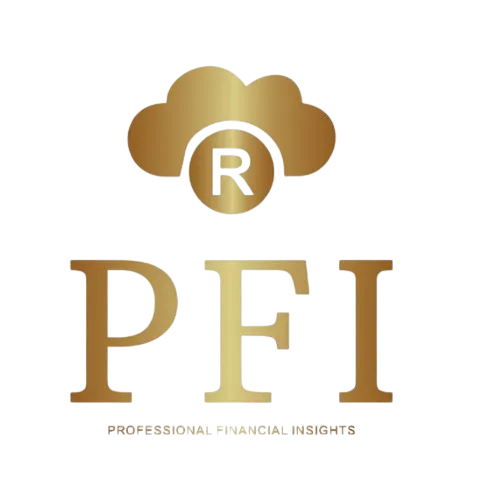
Overspending and Uncontrolled Costs: A Silent Threat to Business Success
Managing costs effectively is critical for the success of any business. However, overspending and uncontrolled expenses are common pitfalls that can quickly erode profits and destabilize even the most promising ventures. While revenue growth is often the primary focus for many businesses, keeping expenses under control is equally important for sustainable success.
What Is Overspending and Uncontrolled Costs?
Overspending refers to exceeding budgeted limits or allocating funds to areas that do not generate sufficient returns. Uncontrolled costs, on the other hand, are expenses that grow unchecked due to poor monitoring, lack of policies, or inefficient processes. Together, they can strain cash flow, lower profitability, and hinder long-term growth.
The Impact of Overspending and Uncontrolled Costs
1. Cash Flow Struggles
• Overspending drains cash reserves, leaving businesses unable to meet short-term obligations like payroll, supplier payments, or operational expenses.
2. Reduced Profit Margins
• Rising costs without a corresponding increase in revenue shrink profit margins, making the business less competitive.
3. Delayed Growth Opportunities
• Businesses with tight cash flow due to uncontrolled spending often lack the resources to invest in growth initiatives like marketing, expansion, or technology upgrades.
4. Increased Debt
• To cover rising costs, businesses may rely on loans or credit, leading to higher interest payments and long-term financial strain.
5. Operational Inefficiencies
• Overspending often stems from inefficiencies, such as redundant processes, poor procurement practices, or lack of cost controls.
6. Reputational Damage
• Constant cost-cutting to address overspending can lead to service quality issues, employee dissatisfaction, and strained relationships with stakeholders.
Common Causes of Overspending and Uncontrolled Costs
1. Lack of a Clear Budget
• Operating without a defined budget makes it difficult to monitor and control expenses.
2. Poor Expense Tracking
• Failing to track expenses in real-time leads to unnoticed overspending until it’s too late.
3. Inefficient Procurement
• Overpaying for supplies, services, or inventory due to poor negotiation or lack of alternatives increases costs unnecessarily.
4. Scope Creep in Projects
• Allowing project goals to expand without updating budgets leads to unforeseen expenses.
5. Neglecting Fixed Costs
• Ignoring fixed costs, such as rent, utilities, or subscriptions, can result in unnoticed increases over time.
6. Overstaffing or Underutilized Resources
• Hiring more staff than needed or maintaining underused assets contributes to unnecessary costs.
7. Lack of Financial Oversight
• Poor financial controls and oversight allow wasteful spending and fraud to go unnoticed.
Strategies to Control Costs and Avoid Overspending
1. Create a Detailed Budget
• Develop a comprehensive budget that outlines expected revenue and expenses.
• Regularly update the budget to reflect actual performance and market conditions.
2. Track Expenses in Real-Time
• Use accounting software or expense tracking tools to monitor costs as they occur.
• Generate regular expense reports to identify patterns and areas of concern.
3. Negotiate with Vendors
• Review supplier contracts and negotiate better terms to reduce procurement costs.
• Consider alternative vendors or group purchasing for better pricing.
4. Implement Cost Controls
• Establish policies that require approvals for significant expenses.
• Set spending limits for departments and monitor adherence to budgets.
5. Eliminate Wasteful Spending
• Conduct periodic audits to identify and eliminate redundant or low-value expenses.
• Cancel unused subscriptions, renegotiate leases, and consolidate services.
6. Optimize Resource Utilization
• Evaluate staff productivity and assign roles more efficiently.
• Sell or lease underutilized assets to free up cash flow.
7. Plan for Contingencies
• Set aside a portion of the budget for unexpected expenses to avoid financial strain.
8. Monitor Key Financial Metrics
• Keep an eye on metrics like operating margin, cost-to-revenue ratio, and cash flow trends to assess cost efficiency.
9. Engage Financial Experts
• Work with accountants or financial advisors to develop strategies for cost control and spending optimization.
The Benefits of Cost Control
1. Improved Cash Flow
• Reducing unnecessary spending ensures more liquidity for essential operations and investments.
2. Increased Profitability
• Lower costs directly contribute to higher profit margins.
3. Enhanced Financial Stability
• Controlling costs helps businesses weather economic downturns or unexpected disruptions.
4. Better Resource Allocation
• Redirecting saved funds to high-impact areas improves overall efficiency and competitiveness.
5. Stronger Stakeholder Confidence
• Financial discipline builds trust with investors, lenders, and partners, ensuring long-term support.
Conclusion
Overspending and uncontrolled costs may not be immediately noticeable, but their cumulative effect can be devastating to a business. By adopting proactive cost management strategies, businesses can protect their financial health, maintain stability, and create a foundation for sustainable growth. If your business is struggling with rising costs or inefficient spending, seeking professional financial advice can make a world of difference. A well-managed cost strategy isn’t just about cutting expenses—it’s about ensuring every dollar wFooterorks harder for your success.
